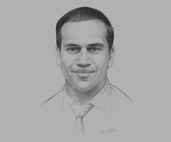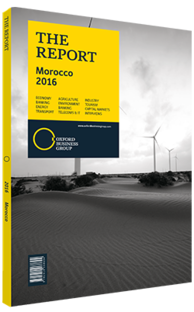Ahmed El Bahri, Managing Director, Cheikh Khalifa Ibn Zaid Foundation: Interview

Interview: Ahmed El Bahri
What challenges do you identify in the upcoming years for the health sector in Morocco?
AHMED EL BAHRI: Access to health care has been a constitutional right since 2011, and the government has set a target of 3300 doctor graduates per year by 2020 to address the needs of the population. Despite efforts made by the public sector, this target is unlikely to be reached as only 1300 doctors currently graduate every year. This is because Morocco is facing a human resources constraint, in addition to an infrastructure shortage. At the Cheikh Khalifa Foundation, we face these challenges through innovative initiatives such as enhanced digitisation and telemedicine.
The lack of human resources applies to both paramedical and medical staff. According to the World Health Organisation, there are 0.6 doctors for every 1000 people compared with 1.2 doctors per 1000 in Tunisia. With a rising population, Morocco is facing two major constraints to achieving the 2020 goal: time and resources. The sector needs to educate and train more doctors and paramedical staff but it takes time. On the paramedical side, we need to train our current staff while attracting skilled workers. This requires financial resources, but also improving the efficiency of employees and capital.
How can technology boost growth in the sector?
EL BAHRI: Digitisation, big data, telemedicine and outbound services will not only cut delays and costs but also reach new patients and provide better care. The digitisation of processes in hospitals, as well as in education, could help alleviate our lack of human resources. For instance, digital training could consist of online courses or tests on virtual patients. Big data can help us better understand our patients, in order to deliver the right care at the right time. Telemedicine – which includes teleconsultation, tele-expertise, telemonitoring and tele-assistance – could lower upfront investment in equipment and help reach remote locations where patients do not have access to decent health care.
In what segments does Morocco have a competitive advantage in the region?
EL BAHRI: Despite infrastructure issues, Morocco’s medical offerings are fairly structured. The health sector is able to attract patients from many neighbouring countries. The quality of medical care, the increasing number of airlines connecting the country to regional capitals, coupled with competitive pricing, have all paved the way for a thriving medical tourism segment in Morocco. European, African and Middle-Eastern patients have thus become interested in our cost-competitive offerings. Many certifications by international organisations, such as Joint Commission International and the French National Authority for Health, have also contributed to strengthening the existing competitive advantages. This helps us gain credibility and attract more patients. With higher efficiency, these offerings can boost hospitals’ revenues, which are reinvested in the enhancement of national standards, equipment, infrastructure, training and research.
How can research be improved in the sector?
EL BAHRI: We need to be realistic. Fundamental research is an integrated and obvious part of our targeted project, but as we just started, we first need to focus on investment in operational and applied research to gain efficiency. The time will come for the fundamental research and this will progress naturally. For example, the creation of a simulation centre, coupled with a reshaped academic curriculum, will strongly cement the relationship between professionals and students in this field. The overall goal is to develop an innovation-oriented mindset to anticipate, answer and care for the population needs in terms of health care provision and education.
You have reached the limit of premium articles you can view for free.
Choose from the options below to purchase print or digital editions of our Reports. You can also purchase a website subscription giving you unlimited access to all of our Reports online for 12 months.
If you have already purchased this Report or have a website subscription, please login to continue.

